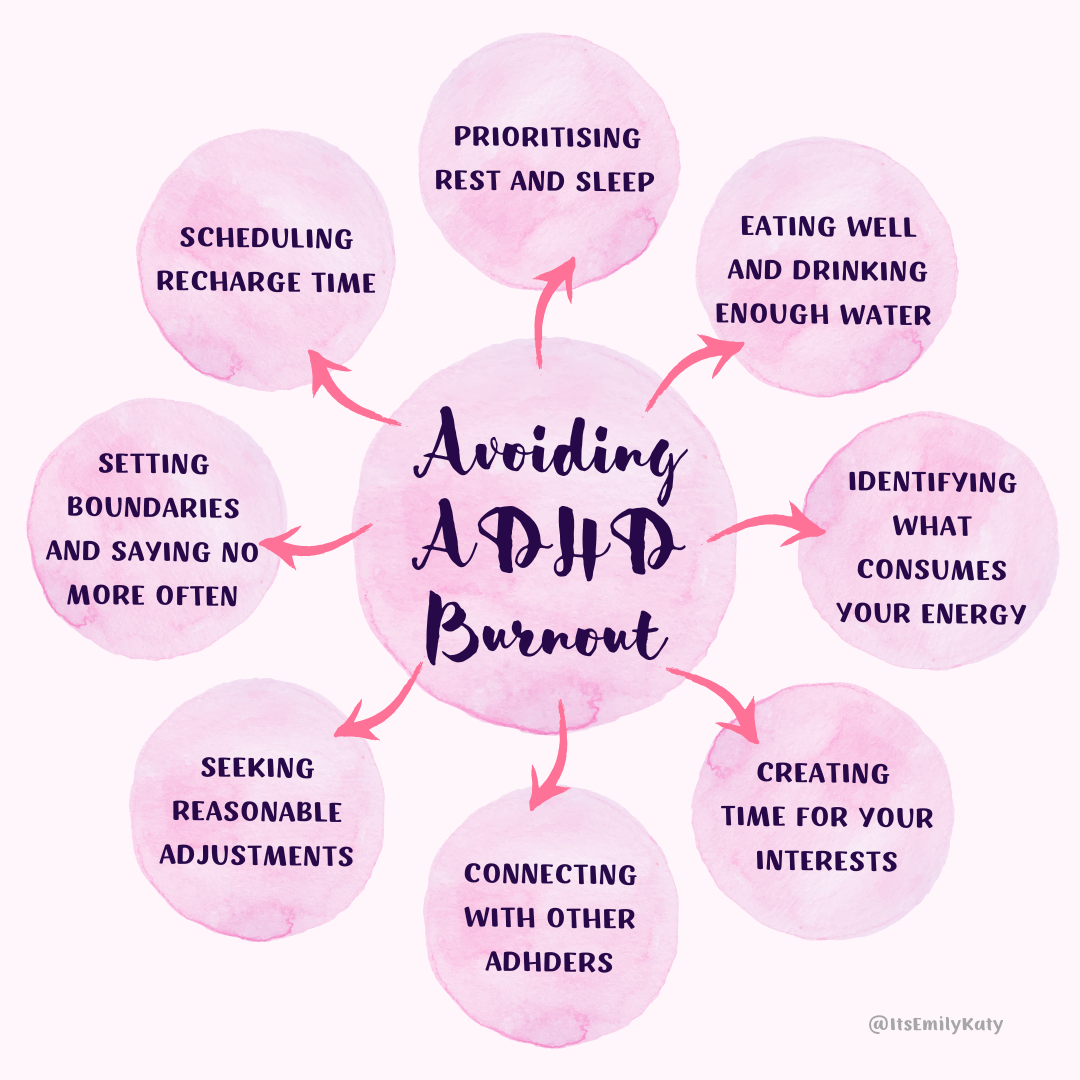ADHD: What is ADHD, Positives of ADHD and Avoiding ADHD Burnout
It’s the end of ADHD Awareness Month. In true ADHD fashion, I’ve been putting off writing this blog post for the whole month. Because getting started on tasks and procrastination is something ADHDers tend to struggle with.
I found out I had ADHD when I was 21 and it helped make sense of a lot of things. Like why my brain thrives on routine and structure (autism), yet I struggle to stick to the same routine and have to constantly switch it up to keep my brain engaged (ADHD). Or like how I find speaking to new people hard (autism) but also interrupt strangers without thinking (ADHD). The interaction of ADHD and autism - aka AuDHD - is like a tug of war. I wrote about it here for Autistic Girls Network.
ADHD has had a lot of attention in the media in recent years for being ‘trendy’ or ‘overdiagnosed’. Which it’s not. It was introduced into the DSM (Diagnostic and Statistical Manual of Mental Disorders) in 1968 as ‘Hyperkinetic Reaction of Childhood’. Let’s be clear - it’s not a mental disorder, but this is the manual by which conditions are diagnosed. The National Institute of Health and Care Excellence (NICE) only recognised childhood ADHD in 2000, and ADHD in adults in 2008, which then enabled people to be diagnosed with ADHD in the UK. It is estimated that 5% of the population have ADHD, but 5% are not diagnosed (ADHD UK). UCL found only 3.5% of boys aged 10-16 were diagnosed in 2018 (UCL). Even in the group most likely to be diagnosed, 5% are not, let alone for all those born before it was even a recognised condition!
The diagnostic criteria for ADHD is centred around hyperactivity, impulsivity and inattention (though it’s more of an inability to regulate our attention, because we can hyperfocus on things we’re interested in and love!). There is SO MUCH MORE to ADHD than those three words. Emotional dysregulation, forgetfulness/poor working memory, difficulty with organisation and risk taking behaviours are just a few of the things widely known to impact ADHDers.
ADHD mind map
Obviously ADHD makes life hard, but there are also a range of strengths and positive traits that come with ADHD. I love that I am so enthusiastic about things I am interested in and my ability to hyperfocus on these is a definite strength. My chattiness from ADHD helps to compensate for my autistic brain struggling in social situations, and I am naturally curious which encourages me to learn new things.
Positives of ADHD
The sad fact is that ADHD comes with a lot of challenges. ADHDers…
have, on average, a 30% developmental delay in executive functioning skills (like working memory, organisation, prioritisation, self-monitoring and emotional control).
are 5 times more likely to die by suicide
have a 5-10x higher likelihood of developing alcoholism
are more likely to get divorced
are more likely to suffer from mental health conditions.
are more likely to drop out of university
are 60% more likely to be fired from a job
This isn’t always because of us having ADHD. It is often a result of our environment not meeting our needs and people not understanding ADHD.
But still, having a brain that never switches off can in itself be exhausting. We have to look after ourselves.
Avoiding ADHD burnout
If you know or love an ADHDer, the best thing you can do is love them exactly as they are. Remind them that they are enough, that they matter and remind them of their strengths. Tell them the things you love about them and show them that it’s okay for them to be who they are.
Having ADHD doesn’t mean my brain is wrong or ‘less’ than a brain without ADHD. It just means my brain is different. And with the right support and understanding, we can thrive too.
Find my recommendations of books and resources on ADHD here.
Read more blog posts about ADHD…
My mind maps are available to purchase as PDF downloads from my store here.
GIRL UNMASKED (The Sunday Times Bestseller) is available to order from Amazon and all major bookstores! https://linktr.ee/girlunmasked.



